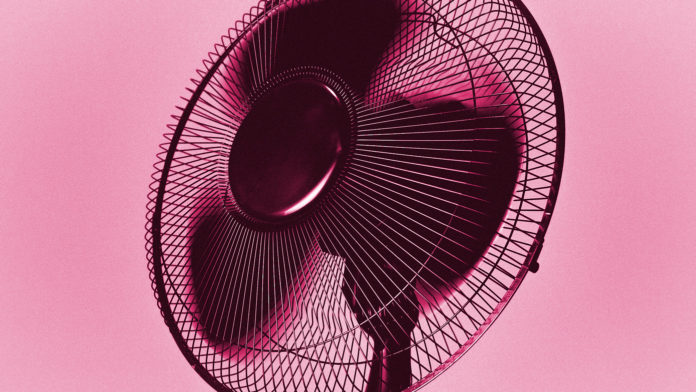As summer heat waves are sweeping across the country, many Canadians are looking for ways to beat the heat. The unrelenting high temperatures can be especially dangerous for people as they age, but why? And can strategies as simple as using a fan backfire?
Marie Nguele and Georgia Chaseling are researchers at the EPIC Centre of the Montreal Heart Institute, and they are looking for practical ways to cool off that actually work. Their target group, adults over 50 with heart conditions, is at high risk of adverse reactions to extreme heat.
They monitor the vital signs of volunteers as they sit in a climate chamber under controlled temperature and humidity for three hours. At the same time, the volunteers give fluid samples and the researchers track the weight they lose through sweat.
Many people may be surprised to learn that many of the common strategies to get cool don’t help lower core body temperature, and can even be more dangerous than doing nothing.
In dry heat, fans can turn a hot room into a convection oven
Over the age of 60, people produce less sweat, and that’s a problem when it comes to cooling off. The evaporation of sweat is one of the main avenues that the body uses to stay cool.
As temperatures rise above body temperature, people start to absorb heat from their environment. In a dry heat, sweat evaporates readily, and then it’s gone. And in people who have trouble producing enough sweat for a breeze to be helpful, using a fan just blows more hot air over them. This only accelerates heating, much like in a convection oven.
That’s why many public health agencies, including the World Health Organization (WHO), advise against fan use during a heat wave where temperatures rise above 35 °C.
But the type of heat is important, because in a humid heat there is already a lot of moisture in the air, and that slows down the evaporation of sweat. In that case, sitting in the breeze of a fan helps that sweat evaporate, and that does help cool core temperatures.
In fact, Chaseling recommends strategies that cool the skin above the rest. If people aren’t producing enough sweat, there are still ways to get the same benefits with water. Helping cool the skin can be as simple as cold showers, wet towels, spraying the skin with water, or even running through the sprinklers.
WHO also recommends hanging wet towels to help humidify the air and cool room temperatures.
When life turns up the heat, skip the lemonade
An ice-cold drink can feel great on a hot day, but the benefit is mainly psychological. In short, it feels great, but it does little to lower core temperatures. That’s because in short order, that drink is simply warmed up to match body temperature.
That doesn’t mean that cold drinks are no help at all. Hydration is still critically important to stay well, but it’s the sugary drinks like sodas that should be avoided, as studies in animals suggest that they can make dehydration worse. The best option for most people is plain water.
Are air conditioners making matters worse?
Air conditioning can seem like a great solution, and it is one of the few options that will certainly work for seniors. In extreme heat, it can truly be life-saving. But it still comes with its own caveats.
Running an air conditioner takes electricity, and not only does it move heat from inside to outdoors, it also generates waste heat as it operates. According to simulations based on energy use, this amount of extra heat is measurable: up to 2 °C in a big city.
It’s a bit like how sticking your head into a freezer to cool down backfires because the waste heat from the refrigerator warms the room overall. It’s just happening on a different scale.
So air conditioners are ultimately adding to the problem, and they’re already taxing electrical grids for power as extreme weather events become more common and severe. This makes affordable and practical strategies to keep cool more important than ever. And with plain water being a star behind the two great strategies for staying cool and hydrated, these are tips that are easy to try.








































